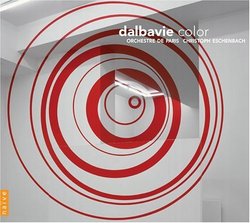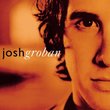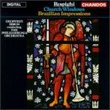| All Artists: Marc-Andre Dalbavie, Christoph Eschenbach, Orchestre de l'Opéra de Paris, Paris Orchestra Title: Dalbavie: Color Members Wishing: 0 Total Copies: 0 Label: Disques Montaigne Release Date: 3/22/2005 Genre: Classical Styles: Forms & Genres, Concertos, Symphonies Number of Discs: 1 SwapaCD Credits: 1 UPC: 822186821626 |
Search - Marc-Andre Dalbavie, Christoph Eschenbach, Orchestre de l'Opéra de Paris :: Dalbavie: Color
 | Marc-Andre Dalbavie, Christoph Eschenbach, Orchestre de l'Opéra de Paris Dalbavie: Color Genre: Classical |
Larger Image |
CD DetailsSimilarly Requested CDs
|
CD ReviewsMysterious transformations -- a spectral Debussy R. Hutchinson | a world ruled by fossil fuels and fossil minds | 08/03/2005 (4 out of 5 stars) "This is the first music I've heard by French composer Marc-Andre Dalbavie (born 1961). There are three works here, two orchestral and one a violin concerto, with Christoph Eschenbach leading the Orchestre de Paris, recorded in 2001, 2003 and 2004. The "Concerto pour Violon" (1996 -- 24'05) is the earliest of the three, and the most exuberant, full of virtuoso passages, some of which sound like a madly sawing fiddle. The full effect is lost in the recording, but in live performance it features novel spatial organization, with the orchestra broken into component parts and scattered amongst the audience, the soloist engaging in a dialogue with 12 distinct groups. The piece is dedicated to Luciano Berio, perhaps drawing on his sequenza series of solo works, and is performed by Eiichi Chijiiwa. The two orchestral works, "Color" (2001 -- 21'28) and "Ciaccona" (2002 -- 19'28) are quite mysterious. They both revel in tones, marking Dalbavie as part of the French lineage extending from Debussy, and both are marked by powerful tonal passages similar to the works of Magnus Lindberg and Erkki-Sven Tuur. "Color" is punctuated by a dramatic sequence of descending chords, while "Ciccona" is similarly punctuated by a dramatic sequence of rising chords, which culminates in an evocatively triumphant major key, and is followed by an impressionistic piano passage. Technically, though, Dalbavie works with many of the innovations of the "spectralist school" of Gerard Grisey and Tristan Murail. I find the form of these works very hard to grasp, which is both frustrating and tantalizing -- they do provoke repeated listening. I'm not sure about "Color," but the other two pieces must have been recorded live as they are both interrupted by loud coughing. Other than that flaw, the Naive disc is well-executed. Marc-Andre Dalbavie joins Unsuk Chin as a superb and accomplished composer who belatedly debuts in the States this year!" Disappointing Marcus K. Maroney | 12/14/2006 (3 out of 5 stars) "I've followed Dalbavie's music with fascination for a long while and am a huge fan of his music. That said, I found this disc of recent orchestral music disappointing. Lacking much of the visceral energy and tension of other recent works (like the amazing Horn Trio), the works here seem, for the most part, one-dimensional - Dalbavie imitating himself, almost. The works aren't bad by any means, and deliver a lot more interest in listening than most orchestral works nowadays, but Dalbavie's trademark gestures (rushing scales, pentatonic fragments, spectralist stackings, etc.) don't have the same directionality they do elsewhere. Individual moments in the works are excellent, but not one of them really overwhelms or leaves much of an impact. I liked the Violin Concerto the best - the playing is truly phenomenal and there is a good amount of interesting dramatic interplay between soloist and orchestra (and solo violin and soloists within the orchestra). The Chaconne, though interesting conceptually and as described in the liner notes, is a downer - dismal music that occasionally seems to be leading towards something impressive but always retreats. "Color" is more of the same. The playing of the orchestra and soloist throughout is fantastic, and if you just want to hear a large group of musicians play some virtuosic music, the disc is satisfying to that end. However, if you really want a great disc of recent music (that happens to be composed by Dalbavie), shell out the extra bucks to get the recent disc of chamber works performed by Ensemble itineraire (including the Horn Trio and the superb "Palimpseste") - available through Amazon France or Cdmail.fr." Dynamic new orchestral works Jeff Abell | Chicago, IL USA | 07/24/2007 (4 out of 5 stars) "Ah, the French do love their theories! The liner notes of this CD do their best to be off-putting, talking about the defocalisation of the spatial hierarchy of the concert hall, and the development of "spectral" music. But if you can get past all the high-falutin' terminology, these works are actually quite musically engaging, which I think was the composer's intention. Mind you, none of the three works included here unfolds in the traditional "narrative" manner of most classical music. Rather than engage you in a "story" - as Tschaikovsky might have done - Dalbavie's approach is more poetic and sculptural. And if you give up the desire for these works to follow the traditional bell curve of musical form, they prove quite engaging. I suspect that if you really want to experience the Concerto for Violin, you need to hear it live, because the orchestra is broken up all over the hall, and I suspect that most of the composer's spatial effects don't really come off on a stereo CD. But both "Color" and "Ciacona" are engaging, even playful at times, orchestral works that reward repeated listening. If you're interested in the music coming from composers like John Adams, you'll find some of the same dynamic orchestral sonorities in these works, but without the pop music references that make Adams' work so "American.""
|






